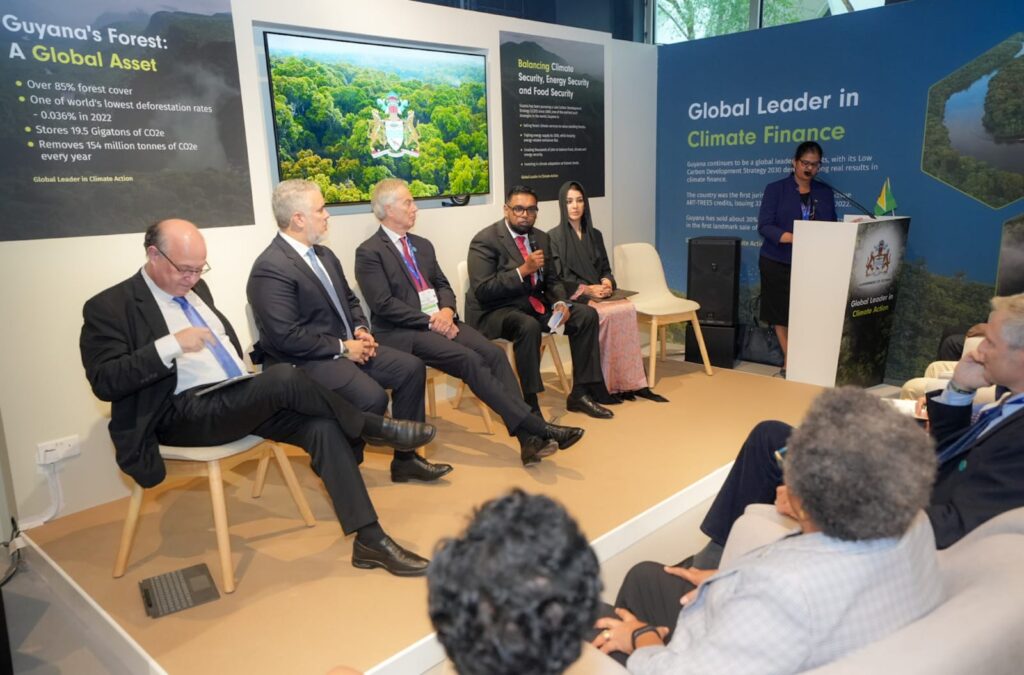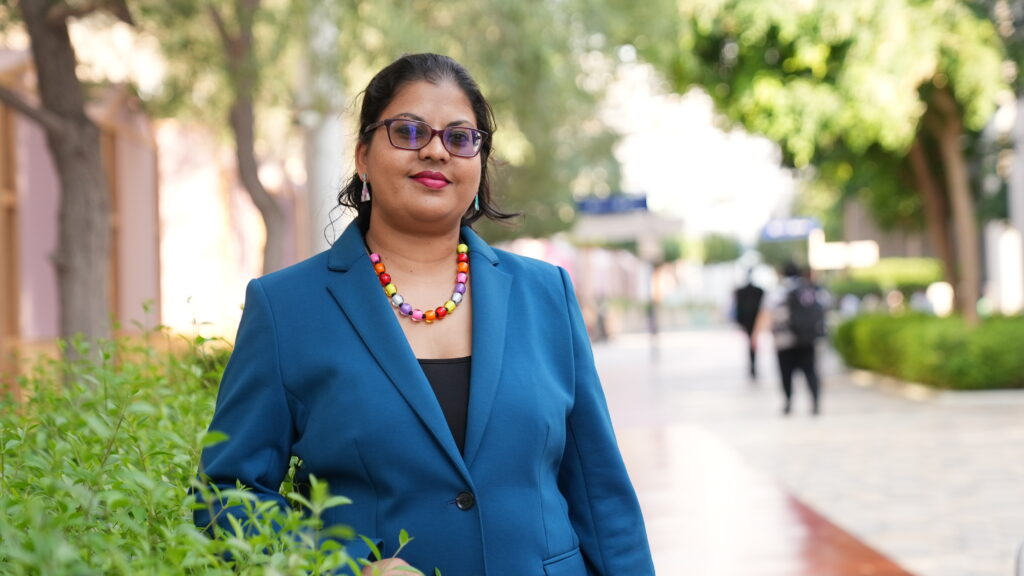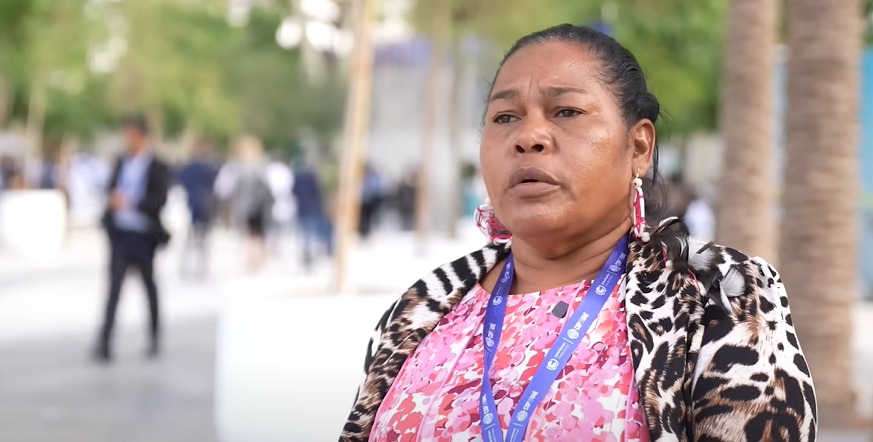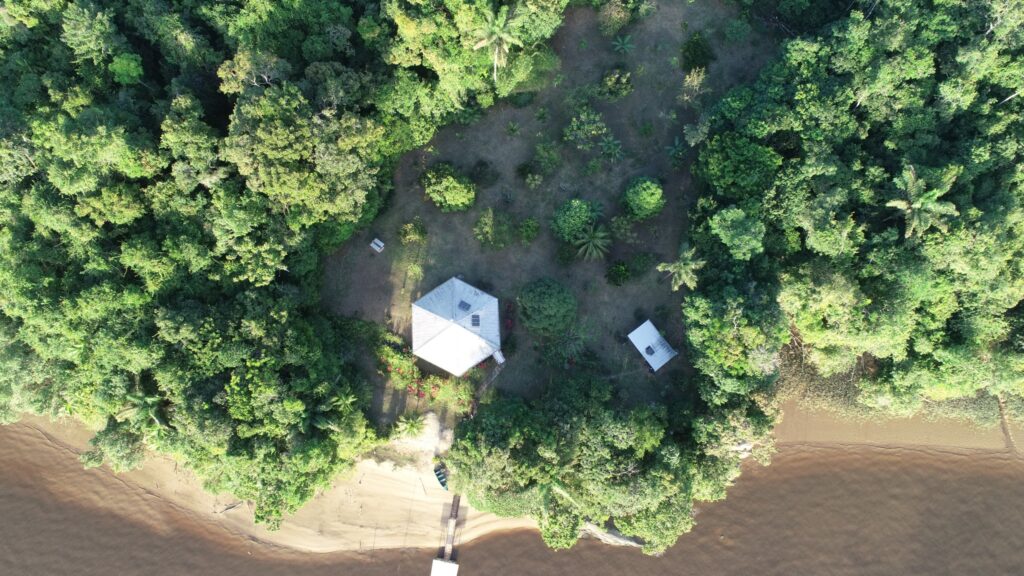When a group of researchers stumbled upon an “exuberantly- coloured snake” in Warapoka in July 2022, they knew what it was, but it was the first time they, or anyone else, had seen it in Guyana.
What Ignazio Avella, Charlotte Lorand, André Surendre and Ronaldo Boyal, just 16, discovered was a reddish snake with black stripes on its dorsum. The belly was almost uniformly orange with very few black spots.
The team, quite familiar with snakes, believed it was an Erythrolamprus dorsocarallinus, a snake found in several localities in Venezuela, Bolivia, Colombia, Peru and the western Brazil Amazonia but never before in Guyana.
“To our knowledge, this is the first report of E. dorsocorallinus from Guyana, thus representing an addition to the faunal list of this country,” they are quoted in the Captive and Field Herpetology Journal as saying.

In other parts of the country, but particularly in the Amazonian forests of Guyana, new plants and animal species are still being discovered. In the last few years, new frogs, other snakes, tarantulas and hibiscus flowers were found in the country.
Finds like these are exactly why Guyana believes there should be some value attached to the biodiversity (plants and animals), both known and unknown, within its forests.
About 85% of the country’s landmass is covered in pristine forests. That’s about 18.5 million hectares of forests that help to trap about 19.5 billion tonnes of carbon dioxide equivalent, the measure for harmful greenhouse gas emissions that contribute to the climate crisis.
And though the country is calling for forest-saving funds, through its new jurisdictional (or national coverage) carbon credits venture that falls under its Low Carbon Development Strategy (LCDS), it believes that it should also get paid to continue protecting the biodiversity found in those forests and for further research to find what hasn’t been found yet.

“As the model (the LCDS) is implemented over the years, we know that there must be a value attached to biodiversity,” Guyana’s President Dr. Irfaan Ali said in Dubai at this year’s United Nations (UN) climate talks, COP28.
Why there must be that value- or in other words, payments- for biodiversity is because the world is losing its biodiversity rapidly, the President explained.
So he posited that “safeguarding the forests and deploying it at jurisdictional scale… allows us the added benefit of biodiversity and ecology services.”
Getting forest payments, from private ventures through the voluntary carbon market, is Guyana’s major focus at this year’s climate talks. The country’s Vice President Dr. Bharrat Jagdeo told the News Room that there just aren’t enough public funds, be it through the Green Climate Fund or the Loss and Damage Fund, for example, to help protect forests and biodiversity in them.

“Part of what we are here for is to draw back attention to forests, we have to outcompete alternate use,” he said at Guyana’s side event in Dubai.
But while it is pushing for forest payments now, Guyana is already looking ahead to what it believes will be the next conversation: protecting the earth’s biodiversity.
Looking ahead: Guyana’s focus
Pradeepa Bholanath, a climate economist who is Guyana’s lead climate negotiator and Senior Director for Climate and REDD+ at Guyana’s Ministry of Natural Resources, knows of this focus.
“Biodiversity, watershed management and looking at other co-benefits that is going to be the new realm of where our LCDS goes.
“Our first LCDS focused on forest carbon. This new LCDS [LCDS 2030] expands to biodiversity and watershed management… as there is growing momentum at the level of the United Nations (UN),” she told the News Room in Dubai where she is for this year’s global climate talks, COP28.

The first LCDS was crafted in 2008 under Vice President Jagdeo, who was President at the time. The expanded LCDS was launched in 2021 under President Ali and Bholanath helped to craft that expanded plan.
The strategy states that Guyana will ensure “unprecedented investment” in the infrastructure required to protect against climate change and biodiversity loss.
Priority areas include the sustenance of biodiversity habitats through, though not limited to, an avoidance of deforestation.
Though “momentum” is growing, the climate economist doesn’t believe there is enough attention yet on biodiversity loss and valuing biodiversity. But in five years’ time, when she estimates the world will place a huge focus on this, she says Guyana will already have a functional strategy in place.
But why save the plants and animals?
For Guyana, protecting biodiversity is important. The LCDS further notes that biodiversity and related resources contribute “tremendously” to Guyana’s economy, particularly in the forestry, fisheries and wildlife sectors.
The country’s Indigenous people too, the plan acknowledges, depend on the natural environment and biodiversity for their livelihood and survival.

“All Indigenous Peoples depend on the forest, we depend on the plants, on the animals, on the waterways, (and) on the trees because this is where we get our livelihood,” Toshao of Rivers’ View Village Melena Pollard told the News Room in Dubai.
Toshao Pollard is the Indigenous leader of her community and she explained that it is the value her people attach to forests and biodiversity that helped them embrace the establishment of Guyana’s newest rainforest research centre there.
The not-for-profit Sophia Point Research Centre was founded in August by United Kingdom Parliamentarian (who has Guyanese heritage) David Lammy and his wife, Nicola Green. It is located in Rivers’ View, about two and a half hours away from the capital city, Georgetown and has been touted as a space to allow researchers, academics and students to study Guyana’s vast forests and what is found there.

Toshao Pollard said studying the forests and the plant and animal species found there and across Guyana is important. She believes more people will be able to understand how to protect these resources.
“We want for it to last for the next hundred generations if possible because we realise the forests don’t only provide for us, they provide a service for the entire world,” she said.
Biodiversity loss might not yet be one of the most-talked-about problems in the climate space but the World Wildlife Fund (WWF) in its “Living Planet Report 2022” stated that human-induced climate change and the loss of biodiversity are interlinked, threatening the well-being of current and future generations.
That report- which says it has the “most comprehensive finding to date”- noted that between 1970 and 2018, there has been an average decline of about 67% in the relative abundance of monitored wildlife populations around the world. That’s alot.
But perhaps more interestingly, the report also noted that the Amazon basin is among the areas deemed “high-priority” for risk mitigation; deforestation is among the risks stakeholders should tackle.
The Amazon is the largest and most bioculturally-diverse tropical forest in the world and Guyana’s forests are part of that Amazon region.
So as Guyana tries to save forests, it hopes that it will get the support it needs to do so and to protect the plants and animal species, like the snake Ignazio, Charlotte, André and Ronaldo, found.
This story was originally published by the News Room, with the support of Climate Tracker’s COP28 Climate Justice Reporting Fellowship.